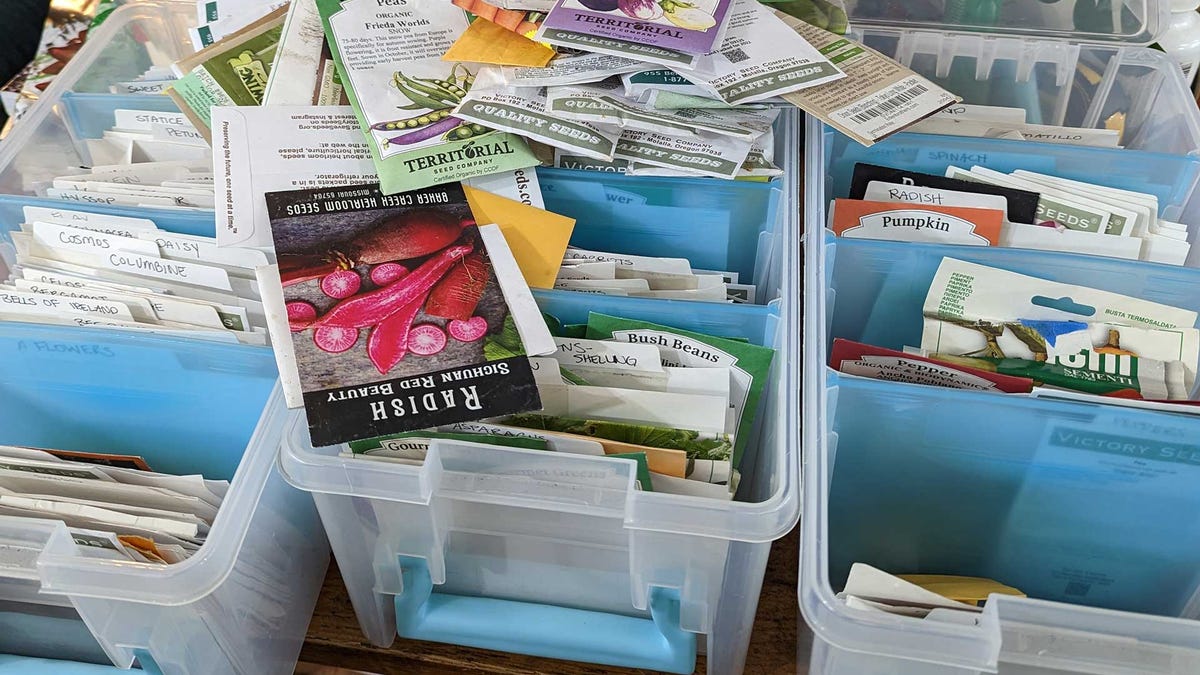The Best Ways to Organize and Store Seeds Year-Round

Eventually, at some point in your gardening journey, you’ll be faced with the predictable problem of where to store all your damn seeds. A box or stack will do at first, but over time you’ll realize you need some kind of library-style organization system. Storage is important because it also affects the viability of your seeds. Here’s what you need to know.
Vegetable and flower seeds have recommendations regarding their viability period. Once a year, it is useful to sort the seeds and remove seeds that have expired. Although it is not certain that old seeds will not germinate, it is still a risk. Other factors can affect seed viability, including humidity, exposure to light and temperature. For this reason, you are increasingly seeing seed companies shipping seeds in foil packets rather than the paper containers of old. How you choose to store your seeds becomes a real factor in how long they will be good for, which affects the rate of germination.
Photo boxes provide airtight storage and organization.
One of the most popular ways gardeners organize their seeds is with photo holders . The seed packets are about the same size as photo prints, and one container contains many sealed 4×6 sub-containers.
Pros: The plus is that you can easily store all the tomatoes together, all the peppers in another sub-container, all the herbs together, etc. They are protected from exposure to air and the light is blocked by the outer container.
Cons: Your organization is limited to these sixteen subcontainers. If you have a seventeenth rank, you will need another box. In addition, if your tomato seeds do not fit in one container, you will have to transfer them to a second one. Personally, I find it cumbersome just going through the seeds.
Binders provide less protection but are easy to expand.
Over the years, gardeners have used these folders by placing packets of seeds in clear pockets, just like people did with CDs.
Pros: They’re highly expandable and easy to reorganize, inserting new pages exactly where you need them. It’s easy to access and browse seeds to find what you need. A solid colored binder that will hold all the pages will protect most of the light.
Cons: The clear sleeves are open so you don’t trap all the air and moisture, and you can lose seeds just by flipping the binding over. Some pages become unwieldy due to seed packets.
If you save seeds or like consistency, this seed storage kit will amaze you.
I’ve never seen this in action, but if you save seeds yourself, this seed storage briefcase seems like a real professional solution: it’s a light-safe case with sixty seed saving bottles inside and airtight storage.
Pros: Avoid using envelopes that don’t need to be resealed, store seeds in vials and reorganize them as you see fit. The case looks safe and durable.
Cons: If you have more seeds than will fit in the bottle, or the seeds are too large for the bottle (I’m talking about large beans, corn, peas, etc.), this is not the best solution. And, as with other solutions, if you need sixty- one vials instead of sixty, you’ll need a new box.
Make it easy with storage boxes
To me? I keep it simple. These ArtBoxes are lightweight, easy to organize inside, and come with dividers. The handles mean I can grab and go and they fold up. I store seeds in light-safe, lined envelopes .
Pros: They’re cheap, simple, and easy to expand (just add more until you actually need a new case).
Cons: They are not light safe unless you use light safe envelopes.